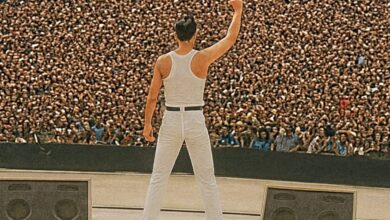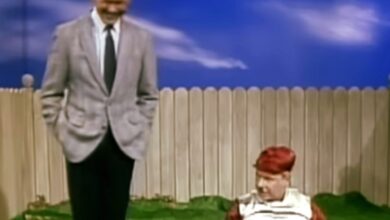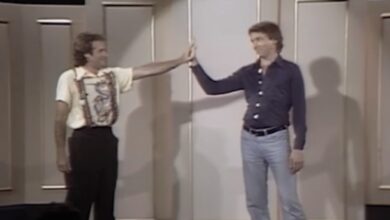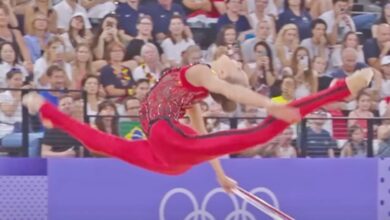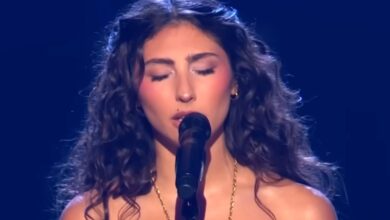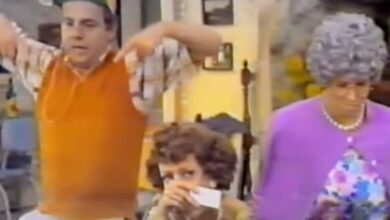Garth Brooks Gets Emotional as Kelly Clarkson’s Stirring Rendition of “The Dance” Brings Him to Tears at the Kennedy Center Honors
The 43rd Annual Kennedy Center Honors had barely settled into its elegant rhythm when Kelly Clarkson walked to center stage, took a breath, and turned a cavernous Washington, D.C., hall into something intimate enough to feel like a living room. In the audience sat Garth Brooks—Stetson off, emotions near the surface—one of the night’s honorees. What followed was that rare awards-show alchemy: a performance that doesn’t just flatter the guest of honor, but reframes a classic in a way that reveals why it mattered in the first place. Cameras caught Brooks blinking hard, then softening, then cracking wide open. The room joined him.
To understand why the moment landed like a gut punch, you have to start with the song itself. “The Dance” is Brooks’ wistful masterwork, a ballad that threads nostalgia and consequence into a single line—how joy and pain are braided, and how our best memories are inseparable from the risks we took to earn them. Clarkson didn’t treat it as a museum piece; she handled it like living text, easing into the melody and letting her phrasing float just above the arrangement. The orchestration kept out of the way, leaving space around her vowels. It wasn’t flashy. It was fearless.
Leading up to the broadcast, the Kennedy Center teased that this year’s show would be unusually emotional, and it delivered—especially in this segment. The ceremony had been recorded in late May and scheduled to air in early June, placing Brooks alongside an eclectic class of honorees that included Debbie Allen, Joan Baez, Midori, and Dick Van Dyke. What makes the Honors different from so many tribute galas is the editorial craft: the cutaways, the wide shots that anchor a performer within the great gold room, and the close-ups that let the audience read a honoree’s eyes. When the feed found Brooks and Trisha Yearwood during Clarkson’s chorus, the story wrote itself.
There’s also a personal layer that intensified everything you saw on screen. On her talk show months earlier, Clarkson had spoken openly about how “The Dance” helped her through heartbreak during her divorce. She described stumbling onto the song on a playlist and recognizing its philosophy as the only honest way to square joy with an outcome that hurt. That backstory wasn’t foregrounded from the stage, but you could hear it in the way she leaned into the bridge—less a singer covering a hit than a person testifying to an idea that saved her. It is no small thing to bring that kind of truth into a room full of tuxedos.
Visually, the Kennedy Center crew staged it with the sort of restraint that often separates the forgettable tributes from the lasting ones. No wind machines, no pyrotechnics, no army of dancers to fill negative space—just a string section, warm lighting, and a camera cadence that breathed with Clarkson’s rubato. The shot selection functioned like counter-melody: an establishing frame to honor the hall’s grandeur, then a glide to Clarkson’s hands on the mic, then the slow, almost shy push to Brooks’ wet eyes. The direction trusted the song. It trusted silence. And in modern television, silence is a daring special effect.
Musically, Clarkson avoided the common trap of trying to “out-Garth” Garth. She kept the key centered where her midrange could bloom without crowding the lyric; dynamics rose not as display, but as argument. The arrangement held the bass line steady and let the strings carry harmonic color, which meant every time she slightly delayed a word—letting a syllable hang just a fraction long—you felt the weight of the choice embedded in the narrative. This was interpretive singing at a very high level: economical breaths, clear diction, and an instinct to let air live between lines so the room could feel the ache.
Then came the cut that everyone remembers: Brooks blinking, throat working, a smile breaking through as if to apologize for the tears and accept them in the same breath. Yearwood leaned closer. The angle wasn’t voyeuristic; it felt pastoral, the camera offering witness rather than spectacle. You could sense the audience doing that soft awards-show murmur—half-gasp, half-“aww”—that means a televised performance has slipped its frame and become human. That is the Kennedy Center at its best: great artists reminded, sometimes against their will, that their work keeps working on them.
Context mattered, too. Brooks is a consummate arena monarch, a figure associated with boot-stomping catharsis and big-hearted banter. At the Honors, the power flipped; the crowd and the cameras were on him, not for him. That inversion is why the tears resonated. Instead of conquering a stadium with volume, he was met in a gilded hall by a peer who had nothing to prove and everything to share. Tribute culture can be cloying when it treats legacy like lacquer. Clarkson’s rendition treated legacy like a mirror. The reflection floored him.
The performance also spotlighted how “The Dance” sits in the broader American songbook. Country ballads often get misread as sentimental; this one is stoic. Its thesis—had we dodged the hurt, we’d have missed the joy—lands differently at different ages, and on this night it reached a man who has played it thousands of times and still found something new. That is the mark of durable songwriting. A great cover doesn’t update a song so much as reveal a seam you didn’t notice. Clarkson tugged at the seam, and the room watched a memory turn into present tense.
If you tracked social reaction in the hours after the clip hit feeds, the adjectives converged: stunning, respectful, devastating. Entertainment outlets posted snippets; fan accounts spliced Brooks’ reaction into side-by-side edits; the Kennedy Center itself urged viewers to stream the full program. What numbers can’t fully capture is the way a moment like this changes how a song travels through the culture—it sends people back to the original, but now they carry Clarkson’s phrasing like a second shadow. That’s how repertoires evolve in public.
There’s also a companionship in play here. Brooks has appeared on Clarkson’s daytime show, and their on-air rapport blends mutual admiration with the ribbing of two veterans who’ve seen the industry from green room to arena rafters. That friendly history gave the tribute a confidential tone, as if one artist were giving another a message in public. Awards shows frequently aim for spectacle; this delivered communion. It felt less like a salute and more like a thank-you offered in the only language that fits: a song, sung cleanly.
From a production standpoint, the Honors are engineered for time and montage—short speeches, curated medleys, narrative packages that contextualize a career. It’s not easy to create a singular, stand-still moment within that clock. Clarkson did it by ignoring the urge to manufacture peaks. She let the lyric do the labor and trusted a hall full of high achievers to sit in quiet. That patience is countercultural TV. It also demonstrates why live performance remains unbeatable as a storytelling medium: shared breath, shared risk, shared release.
Brooks’ reaction, meanwhile, reinforced a truth that veterans and rookies alike learn eventually: the work does not belong to you once it leaves your hands. Watching someone else hold it with care can be more disarming than a stadium sing-along. His tears were not embarrassment; they were evidence that a song written decades earlier had come back with new meaning, bearing witness to seasons of life it could not have predicted when it was born. That’s the long tail of American popular music—songs aging alongside the people who love them.
The guest list around the tribute underlined the Honors’ panoramic sense of American artistry. To see Brooks recognized alongside figures from dance, classical music, folk, and television comedy is to remember that the canon is a messy, collaborative quilt. In that polyglot context, Clarkson’s country-borne lament didn’t feel provincial; it felt universal. The ceremony’s producers understand that when you place a simple ballad amid virtuoso fireworks, the ballad can read like a revelation. On this night, it did.
As for Clarkson, the performance joined a growing list of moments where she’s reinterpreted other artists’ signatures with clarity rather than mimicry. Her range is obvious; her restraint is the story. Here, she sang like someone who has lived with the lyric and found a home in its philosophy. When the final note dissolved and the room answered back, you could sense a collective exhale—the kind of relieved applause that says thank you for taking care of something we care about. She did. And in doing so, she gave the song back to the man who made it famous, newly wrapped.
Days later, the clip kept renewing itself online, with headlines highlighting Brooks’ tears and fans sharing personal testimonies about what “The Dance” had helped them survive. That’s the secret engine of a tribute: it’s never only about the honoree. It’s about the people at home who find their own knot of memory loosened by a familiar chorus sung a new way. In a season when speed often flattens feeling, the Kennedy Center and Kelly Clarkson created a pause. Inside that pause, a legend cried, a room listened, and a great American song did again what it has always done—tell the truth gently.
